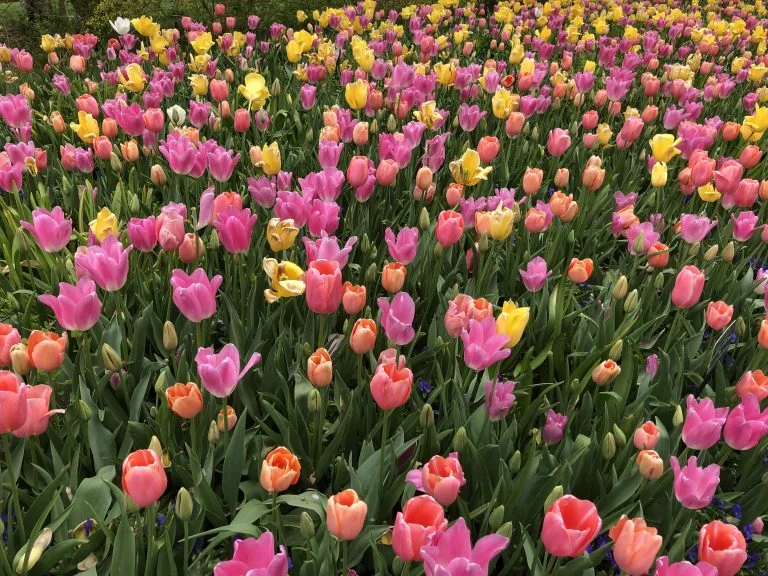Now that your customer’s spring bulbs have bloomed and are starting to die back, the question becomes should they remain in the ground or be dug up?
Basically, it comes down to the particular type of bulb that’s planted and whether or not they are being treated as annual or perennial plants.
Take a look at what you need to know when dealing with these different types of bulbs and the best plan of action to take for both annuals and perennials.
Annuals
While it’s true that most spring-flowering bulbs will actually be perennials, because they come back year after year, most landscapers will treat them as if they are annuals and plant new ones each year.
Not all bulbs will bloom reliably each season, so this can sometimes prove to be a smart move, and not all growing conditions and climates will support repeat flowering. Also, some customers might enjoy the flexibility that accompanies being able to try out new varieties of bulbs and color variations each year.
For example, tulips are commonly treated as annuals because it can prove tricky to get them to bloom again in a garden or container. Generally speaking, when a tulip bulb becomes large enough to produce a bigger flower, they will split after the spring bloom. That next spring, the split bulb typically won’t rebloom, or if it does, it will only produce a smaller flower.
Once the bulbs have finished blooming and the foliage has begun to fade, lift the bulbs that are planted in the ground or in containers and add them to the compost pile.
Perennials
There are some bulb types that are very likely to rebloom and naturalize season after season, which will spread by bulblets, baby bulbs that form at the base of the parent bulb, or seeds to form large clumps of bulbs in the next year.
A few common types of perennial bulbs are daffodils, hyacinths, snowdrops and crocus, and as stated previously, tulips can repeat bloom but they have proven to be less predictable.
Once they begin to fade, start deadheading the flowers of any hyacinths, daffodils and repeat-blooming tulips. The cuts should be made at the base of the flower stem, and it will encourage the bulb to begin pulling energy back into its leaves. For smaller bulbs like muscari, snowdrops and allium, avoid deadheading and just let the flowers fade.
Bulbs will reabsorb nutrients from their leaves to help supply energy for the coming year’s growth, so it’s better to wait until the leaves have turned completely yellow and limp before you attempt to remove them.
If your customer thinks the plants look unsightly in this manner, consider tying up the fading leaves to make them look neater, or on larger scale projects, consider planting leafy perennials like hosta to grow and cover the yellowing foliage of the bulbs.
If your customers have alliums in their yard that begin to show yellow leaves, remember that since their leaves are larger, they tend to be a little harder to hide than others. With this in mind, consider planting this type of bulb in and around shrubs like hydrangeas, roses or other varieties of tall mixed perennial borders that will have enough foliage to hide the yellowing leaves of the alliums.
Snowdrops and muscari will both multiply by seeds and bulblets to form larger clumps of bulbs in the coming years. For muscari, it’s important to leave both the foliage and faded flowers on the plant to encourage seed formation and nutrient absorption back into the bulb.
Containers
For spring-blooming bulbs planted in containers, there’s a good chance they were either planted previously in the fall or they were added in the spring as forced bulbs from nursery pots.
Depending on the variety and your area’s climate, forced bulbs are typically used as annuals and could rebloom if they are planted out in beds, however, it’s not a sure-fire thing.
If your customers would like to you attempt to plant their container bulbs in the landscape, deadhead flowers from any daffodils, hyacinths or tulips and tie up the foliage while the plant is allowed to die back. Once this is finished, lift the bulbs, with the withered foliage, and plant them out in the garden.

